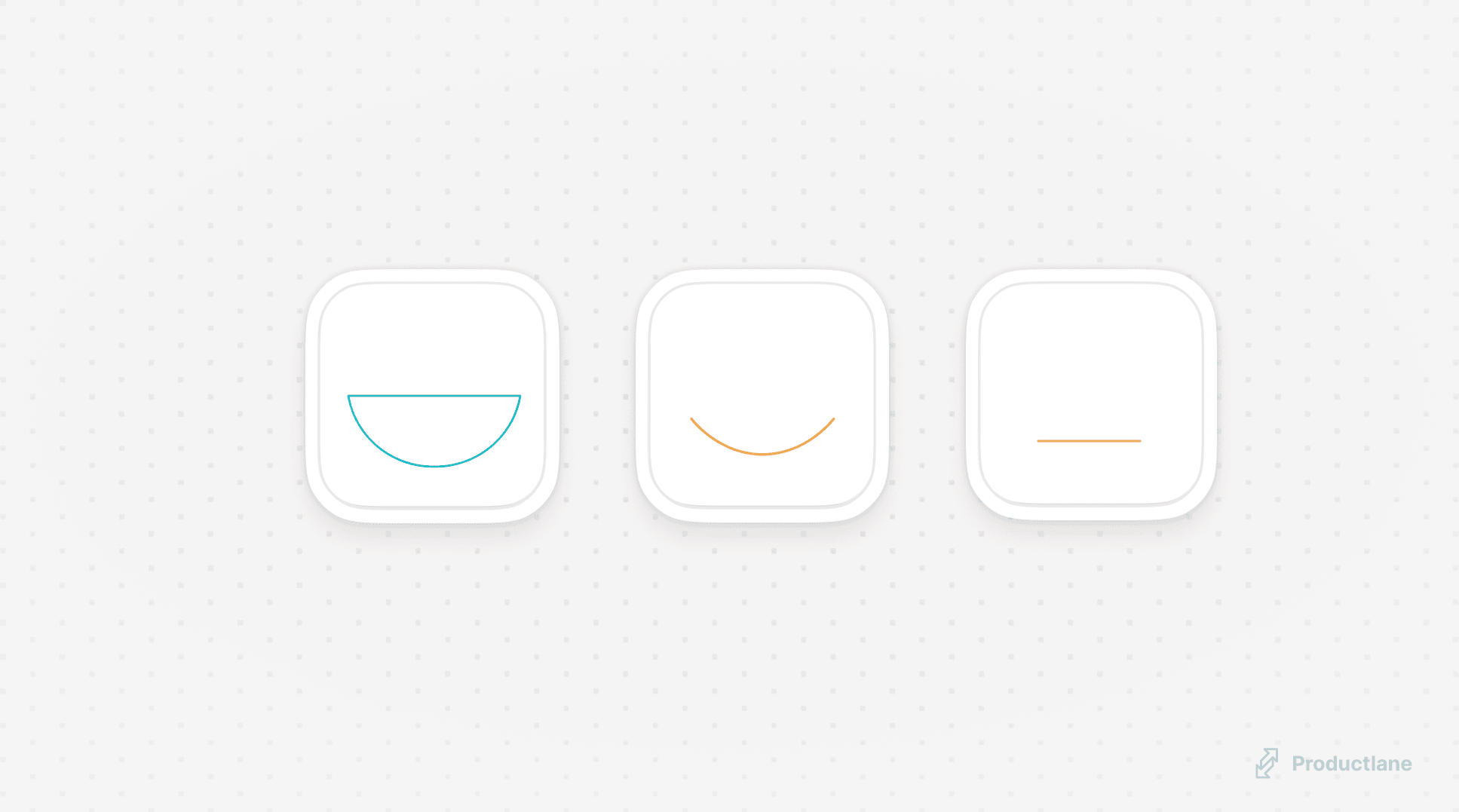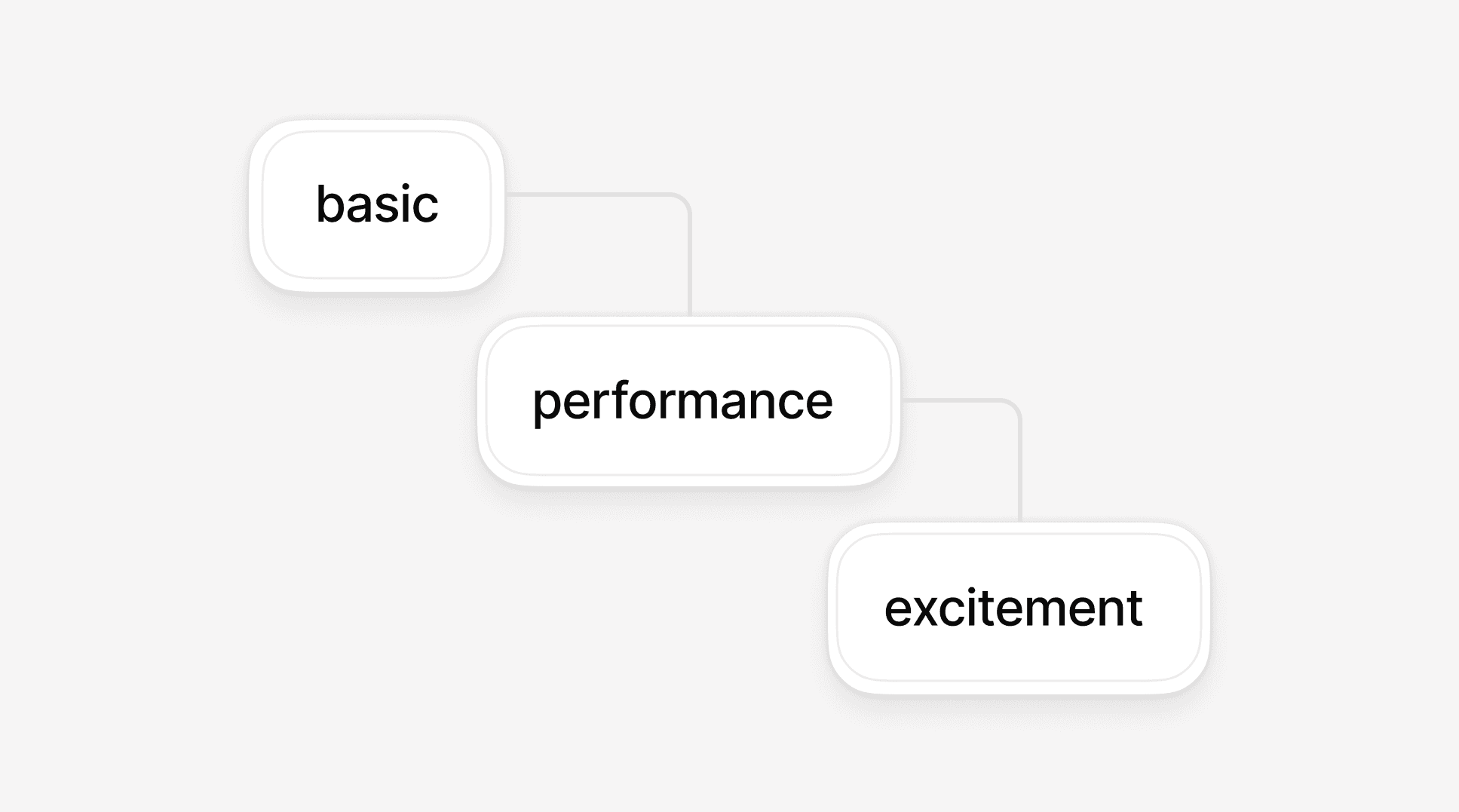The Jobs-to-be-Done Framework: Understanding your customer's needs
The Jobs-to-be-Done Framework: Understanding your customer's needs

Andrea Ramsbacher
Growth Manager
Dec 8, 2023
6m
TL;DR: The Jobs-to-be-Done (JTBD) framework helps understand customer needs by focusing on the 'jobs' customers want products to do. It categorizes needs into functional, personal-emotional, and social-emotional jobs, guiding product development to solve real customer problems. While effective in aligning products with needs, it may have challenges in translating user ideas into features and overlooking other important aspects. Despite this, JTBD remains relevant for prioritizing customer problems in product development.
TABLE OF CONTENTS
Creating a new product isn’t just about making something cool; it’s about making something that tackles people’s problems. That’s where the Jobs-to-be-Done (JTBD) framework comes in, a method that emerged as a product development tool focusing on people.
You can think of it as your guide to understanding what really matters to your customers. Instead of guessing what they might like, Jobs-to-be-Done helps you figure out why they actually use your product. It’s like finding out what they truly need, not just what they say they want. But the question is: Is it still a relevant method to understand your customers and make sure you tackle their problems?
In this article, we’ll take a closer look at how this framework can turn customer feedback into a clear roadmap for creating products that people can’t wait to use.
Why the “Jobs” in “Jobs-to-be-Done”?
Rather than focusing only on the product features, the JTBD framework focuses on the 'job' that the product is hired or bought to do in the lives of your customers. For instance, why does your customer want a drill? Well, probably because they need a hole in their wall… you can then base the development of your product (in this case, your drill) on this piece of information.
This framework has therefore a more customer-centric approach to your product development and takes the next step to explore your customers’ true motivations for buying. It's a way of understanding why they make the choices they do by looking at the 'jobs' they aim to accomplish.
Plus, JTBD is different from other methods because it focuses on the real problem users have, not just the solutions they suggest. When we talk to customers about the problems they’re experiencing, they’ll often speak in terms of their proposed solution. But it’s your job to develop a solution, not theirs.
How the Jobs-to-be-Done Framework Works

Simply said, the Jobs-to-be-Done framework categorizes customer needs into 3 types of jobs:
functional jobs
personal-emotional jobs
social-emotional jobs
Let’s imagine your customer going from Point A to Point B. A functional aspect is the travel to Point B. If the distance is very far, your customer may want to buy an airplane ticket instead of driving a car. A personal-emotional job aspect could be your user’s commitment to the environment, which may lead them to either use an electric car or a bike. A social-emotional aspect may lead to them buying a fancy high-end car that will give them some visible social status.
Therefore, by identifying these distinct three job types, you can understand the different priorities and motivations that “drive” your customers to buy your product functionally, emotionally, and socially.
Implementing the Jobs-to-be-Done Framework
Understanding the JTBD framework is one thing, but implementing it is another thing:
First, you should discover what job users are trying to accomplish, e.g., by talking to customers who are using your product with the above-mentioned framework. You can do it, for instance, with user interviews. This will allow you to trace their journey from the purchase moment and work backward to understand their original intent and problems that led them to buy your product.
Next, once you know their problems, you should craft clear statements for each 'job to be done' by using a simple structure: Action verb -> Object of action -> Clarifier.
For instance, Apple's Jobs-to-be-Done for their music ecosystem was 'Listen to music without buying the whole album.' Another JTBD example for a software startup could be ‘Accomplish tasks efficiently without losing track of deadlines.’, which captures what users might seek from a task management tool.

Finally, always consider related outcomes for these JTBDs: what customers want to achieve or avoid and what providers desire or aim to avoid. Using this framework, your product planners and managers will understand customers well and make products as well as a corresponding roadmap that tackles their initial problems.
Examples of Jobs-to-be-Done
Understanding the Jobs-to-be-Done Framework is easier when given examples. The Jobs-to-be-Done examples below will help you also when working on your customer's jobs.
Apple music ecosystem: "Listen to music without buying the whole album."
Zoom: "Interact with colleagues and customers without being in-person."
Paypal: "Make digital and secure payments."
The Pros and Cons of Jobs-to-be-Done
The JTBD has, of course, its advantages and disadvantages. The most important benefit of it (according to us at least!) is that JTBD helps you make products that really solve problems users care about. It also stops your team from just adding random features to your product and ensures it actually makes sense and matches what users are looking for.
However, sometimes, JTBD can be a bit hard to put into action. It might make things too abstract, making it tough to turn user ideas into real product features. Also, it might lead to products that do one great thing but forget about other important stuff, like making things easy to use or look nice. This might happen because JTBD mostly focuses on solving the main job users want, possibly leaving out other important aspects users care about. So, this is definitely something you should keep in mind if you are using this specific framework.
So, is the Jobs-to-be-Done Framework Still Relevant Nowadays?
Yes, we argue that the Jobs-to-be-Done framework is still very relevant because it focuses on one important thing: your customers’ problems. And this is what a product team should always focus on. Of course, you can always combine this framework with other methods to build your product, such as a prioritization method.
Still, the JTBD will help you focus on your customers.
And that’s what we believe in at Productlane. Instead of just making products, it focuses on what customers are trying to tackle with your product. In this journey, we can help you with our tool. We developed a collaborative research platform with a seamless integration with issue trackers, enabling you to track your user insights better. Therefore, you will always keep an eye on which problems your customers are experiencing and will be able to understand the jobs to be done in your product discovery.
Sign up for a free Productlane account here!
You might also like


